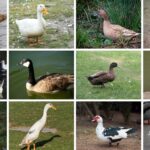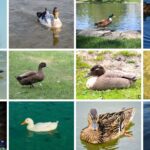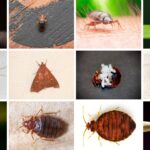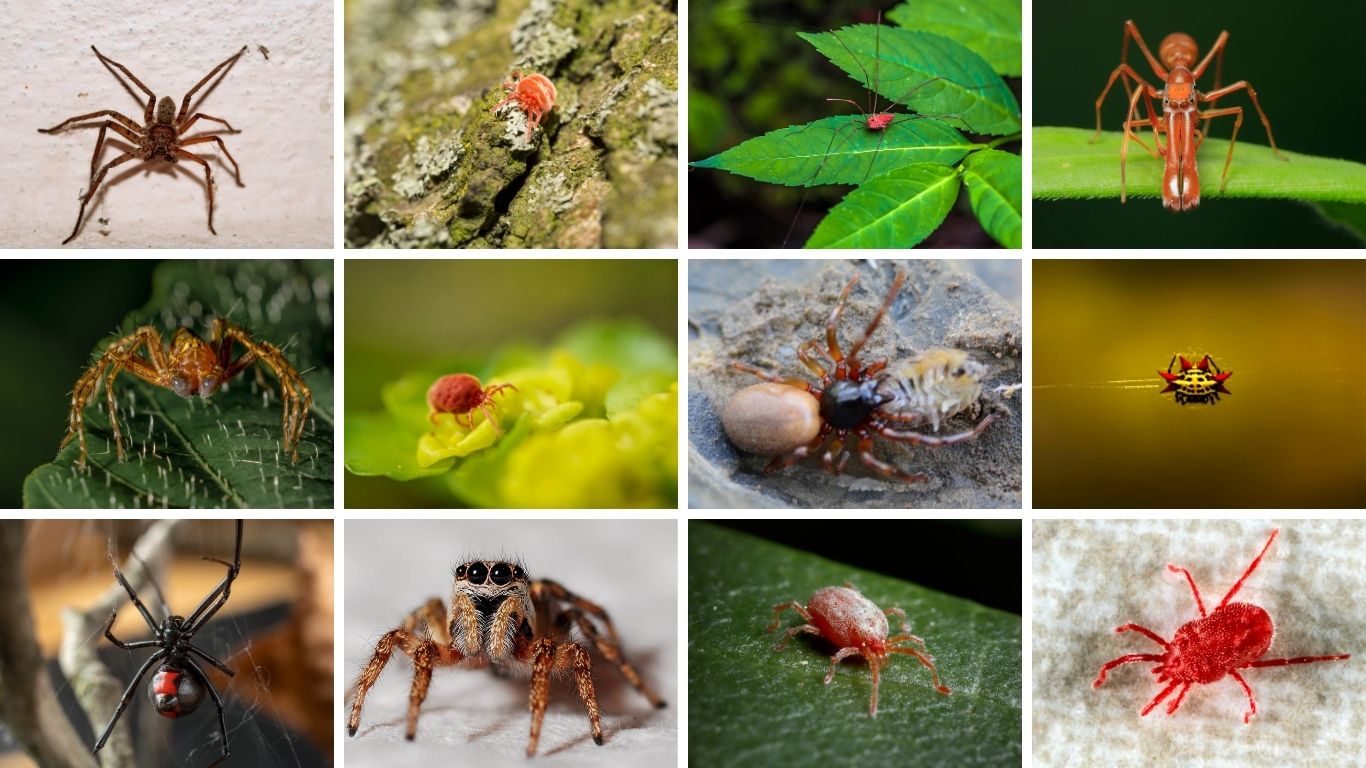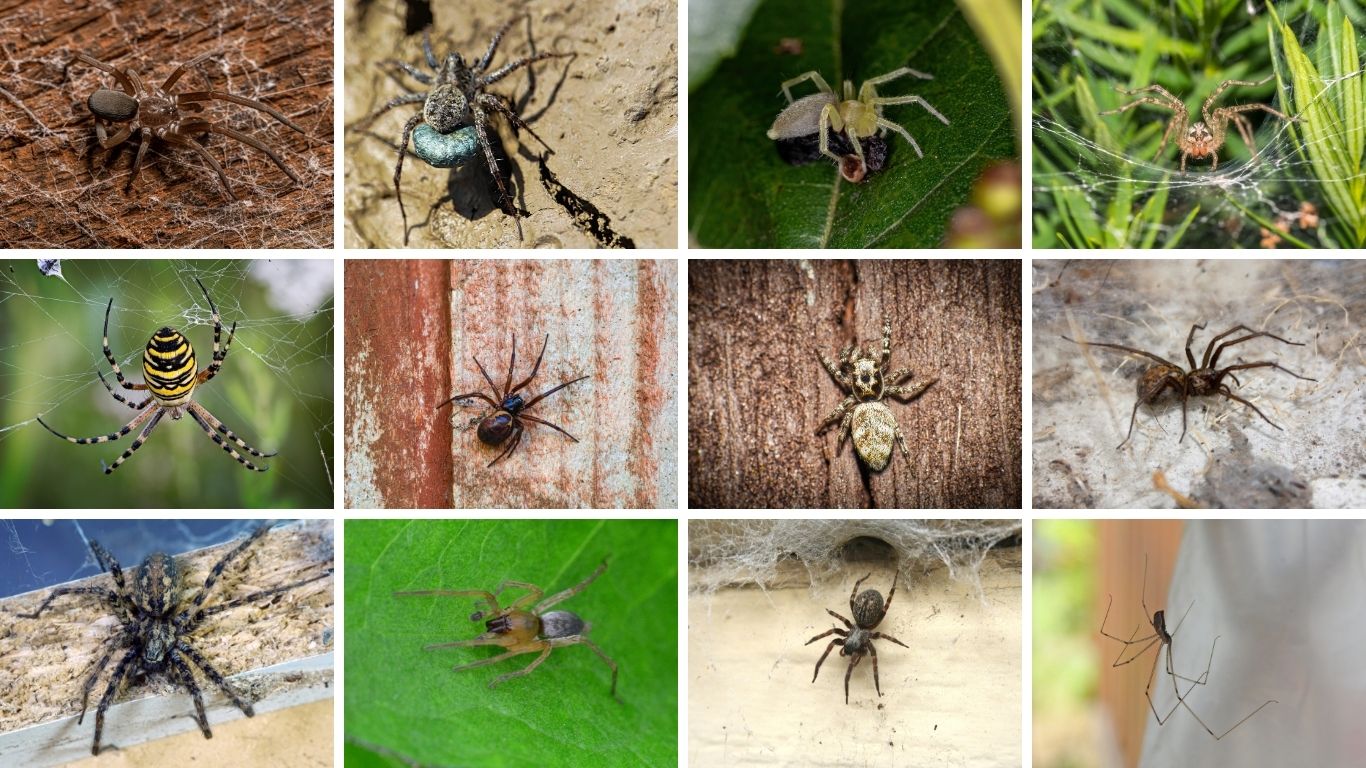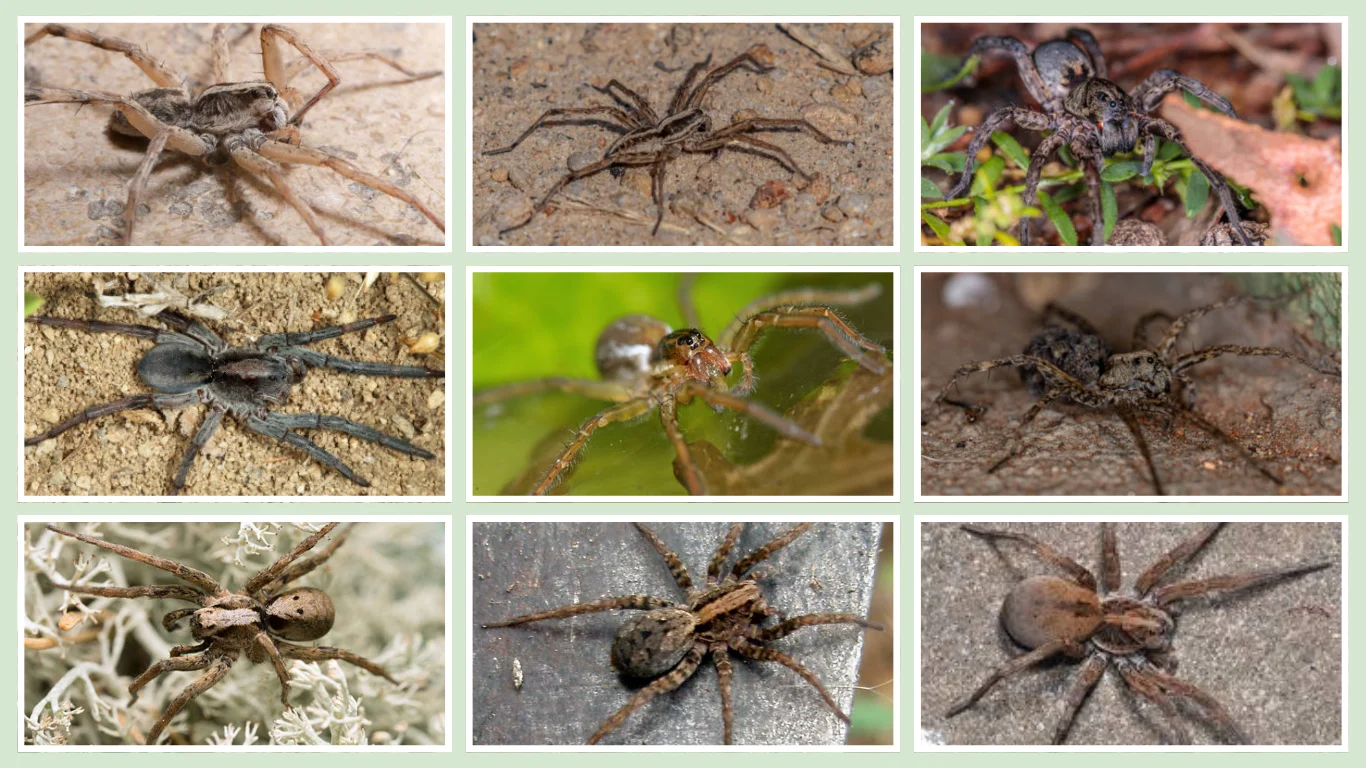Small red spiders often catch the eye with their vibrant color and tiny size. While some are harmless garden dwellers, others can be plant pests or rare venomous species. In this guide, you’ll discover 13 fascinating types of small red spiders, along with key identification tips, color patterns, habitat behavior, and life cycle details to help you understand and manage them better.
1. Red Spider Mite (Tetranychus urticae)
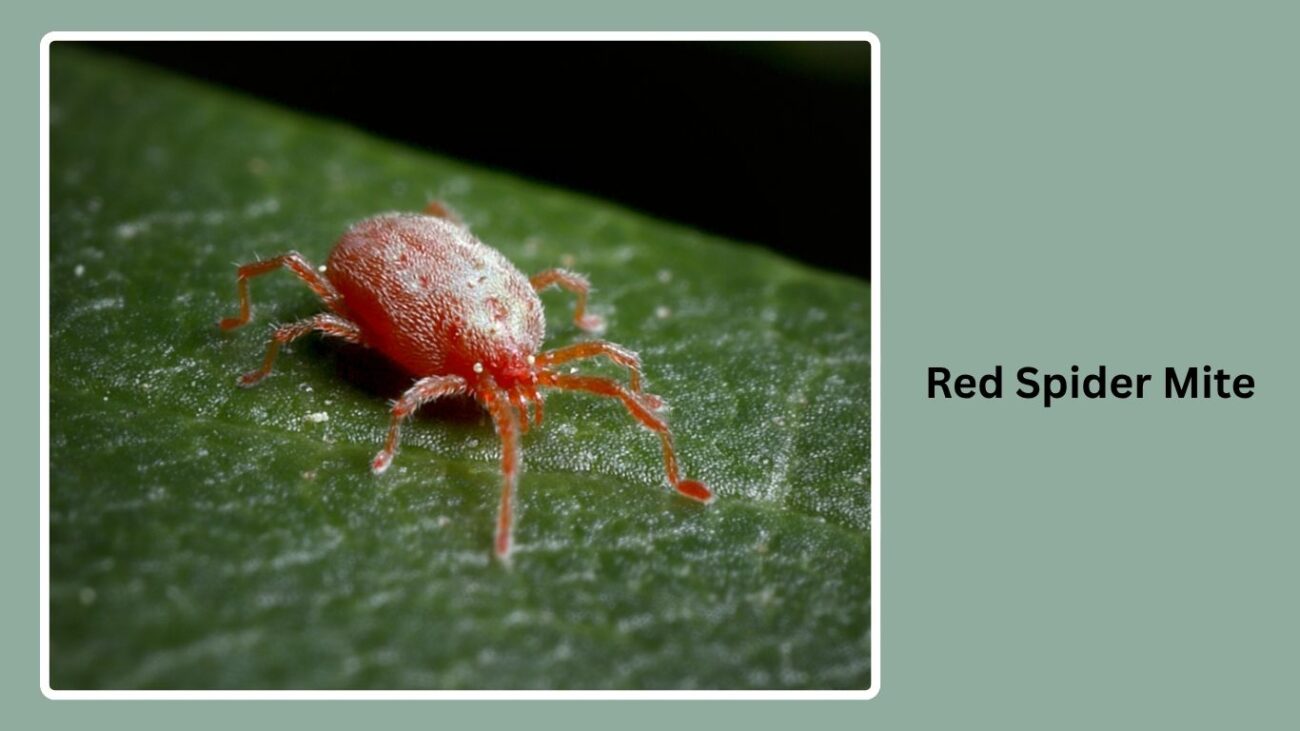
Red spider mites are tiny arachnids commonly found on the underside of leaves. Despite their name, they are not true spiders but belong to the mite family. These pests are known for their reddish coloration and their ability to cause significant damage to plants by sucking out cell contents.
Identification
- Size: Less than 1 mm
- Shape: Oval and soft-bodied
- Color: Bright red or reddish-orange
- Legs: Eight legs
- Webbing: Fine, silky webbing on plant surfaces
- Often seen in clusters
Color Pattern
Red spider mites typically appear bright red, although younger stages may be paler. Their body is translucent when young and becomes a deeper red as they mature. Some may also show dark spots due to internal organs.
Habitat and Behaviors
They thrive in hot, dry environments and are commonly found on houseplants, garden plants, and crops. These mites feed on plant sap by piercing leaf cells, which causes stippling or yellowing. They reproduce rapidly, and infestations can escalate quickly. They also spin fine webs, especially when present in large numbers.
Development and Reproduction
Red spider mites go through five main stages: egg, larva, protonymph, deutonymph, and adult. Females can lay hundreds of eggs during their short lifespan. Under warm conditions, their life cycle can be completed in just 5–7 days, allowing populations to multiply rapidly.
2. Red House Spider (Nesticodes rufipes)

The red house spider is a small, reddish arachnid often found in human dwellings. Though not aggressive, it can bite when disturbed. Its web-building behavior and adaptability make it a frequent indoor spider in warm climates.
Identification
- Size: Around 4–7 mm
- Color: Reddish-brown to deep red
- Legs: Long, slender, and darker than the body
- Web: Irregular, tangled cobwebs
- Body: Smooth and shiny
Color Pattern
This spider has a uniform reddish-brown body with slightly darker legs. The coloration may deepen with age or vary slightly depending on lighting and surroundings.
Habitat and Behaviors
Red house spiders prefer undisturbed corners of homes, sheds, and garages. They are nocturnal, spending daylight hours hiding in their webs. They spin messy, irregular webs and wait for prey such as flies or ants to get trapped.
Development and Reproduction
They lay eggs in silken sacs within their webs. Spiderlings hatch and remain near the mother until they disperse. The entire life cycle may take a few months depending on temperature and food availability.
3. Red Velvet Mite (Trombidium spp.)

Red velvet mites are bright red, fuzzy-looking arachnids found in soil or leaf litter. Though they resemble spiders, they are a type of mite. They are harmless to humans and beneficial to gardens as predators of insect eggs and small pests.
Identification
- Size: 1–2 mm (larvae), up to 5 mm (adults)
- Body: Covered in dense red hairs
- Color: Bright red velvet appearance
- Movement: Slow and deliberate
- Eyes: Usually two simple eyes
Color Pattern
The dense red setae (hair-like structures) give them a velvety, intense red look. Their color serves as a warning to predators, signaling they are unpalatable.
Habitat and Behaviors
They are mostly seen after rain in soil, forest litter, or gardens. These mites feed on small arthropods, insect eggs, and decaying organic matter. Larvae are often parasitic, attaching to other insects.
Development and Reproduction
The life cycle includes egg, larval, nymphal, and adult stages. Larvae often parasitize insects, while adults are free-living and predatory. They reproduce seasonally, usually during wet conditions.
4. Clover Mite (Bryobia praetiosa)
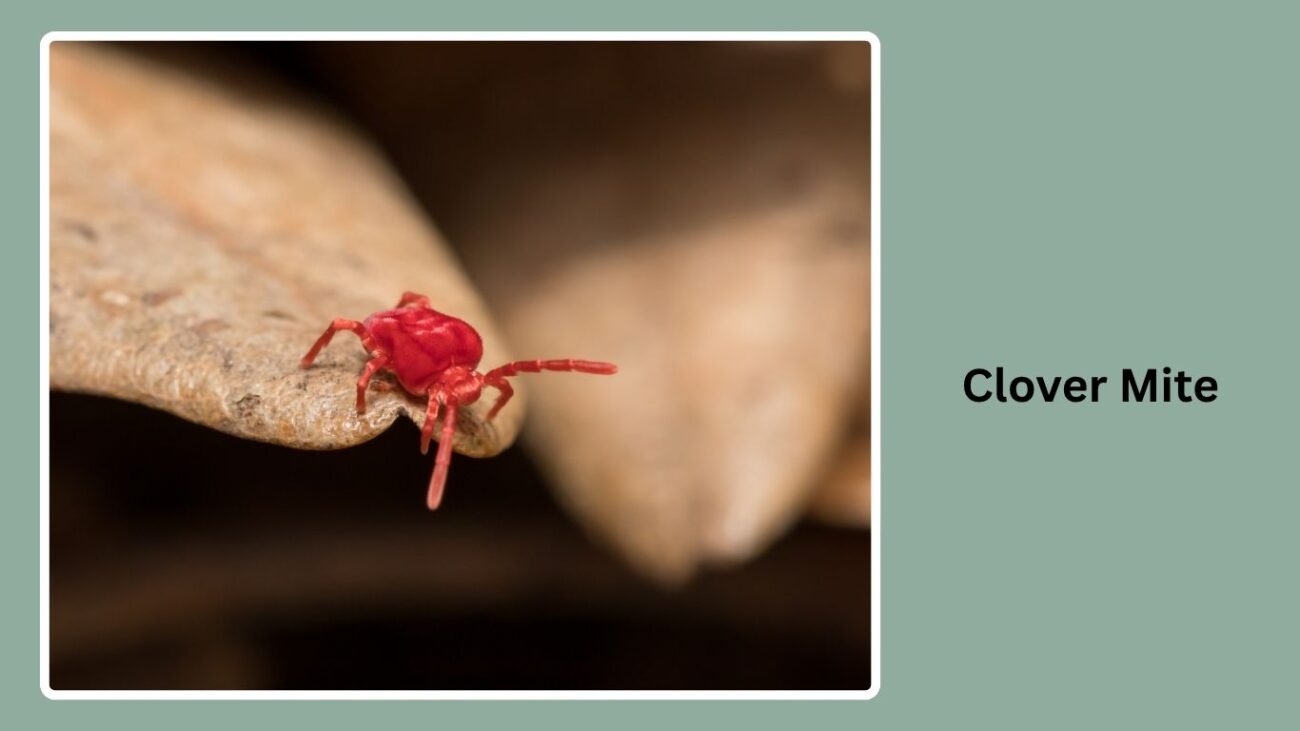
Clover mites are tiny red arachnids commonly found crawling on walls, windows, and plants. Though harmless to humans, their sudden indoor appearances can be alarming. They are more nuisance pests than damaging invaders.
Identification
- Size: About 0.75 mm
- Color: Bright reddish-orange
- Shape: Oval body with long front legs
- Legs: Eight legs, with front pair longer and extended forward
- Crushing them leaves red stains
Color Pattern
Clover mites are consistently reddish-orange all over. Their color is uniform, though slightly translucent under direct light. Their body lacks markings or patterns.
Habitat and Behaviors
They live in grassy areas, lawns, and gardens, especially near foundations. During population booms, they migrate indoors through cracks and window frames. They feed on grass, clover, and other plants by piercing and sucking plant juices.
Development and Reproduction
Clover mites reproduce parthenogenetically—females lay eggs without mating. Their eggs are laid in protected spots, and life cycle completes in just a few weeks. They are more active in cooler months and tend to disappear in hot summer weather.
5. Red Jumping Spider (Phidippus johnsoni)

Phidippus johnsoni, also known as the red jumping spider, is a vibrant, active predator known for its jumping abilities and bright red coloration. It’s often mistaken for a dangerous spider, but it’s harmless and beneficial.
Identification
- Size: 8–15 mm
- Color: Bright red cephalothorax and abdomen, black legs
- Eyes: Prominent front-facing eyes
- Movement: Jerky, agile jumping behavior
- Hair: Short, dense body hair
Color Pattern
Typically, the spider’s abdomen and upper body are vivid red or orange-red, while the legs and lower body are glossy black. Males may show more contrast than females.
Habitat and Behaviors
They are active hunters found on fences, rocks, garden plants, and even indoors. Instead of webs, they stalk and pounce on their prey. They rely on vision for hunting and communicate with leg movements during mating.
Development and Reproduction
Egg sacs are laid in silken retreats under bark or stones. Spiderlings go through several molts before reaching maturity. Their life cycle spans several months to a year depending on environment and food supply.
6. Red Widow Spider (Latrodectus bishopi)
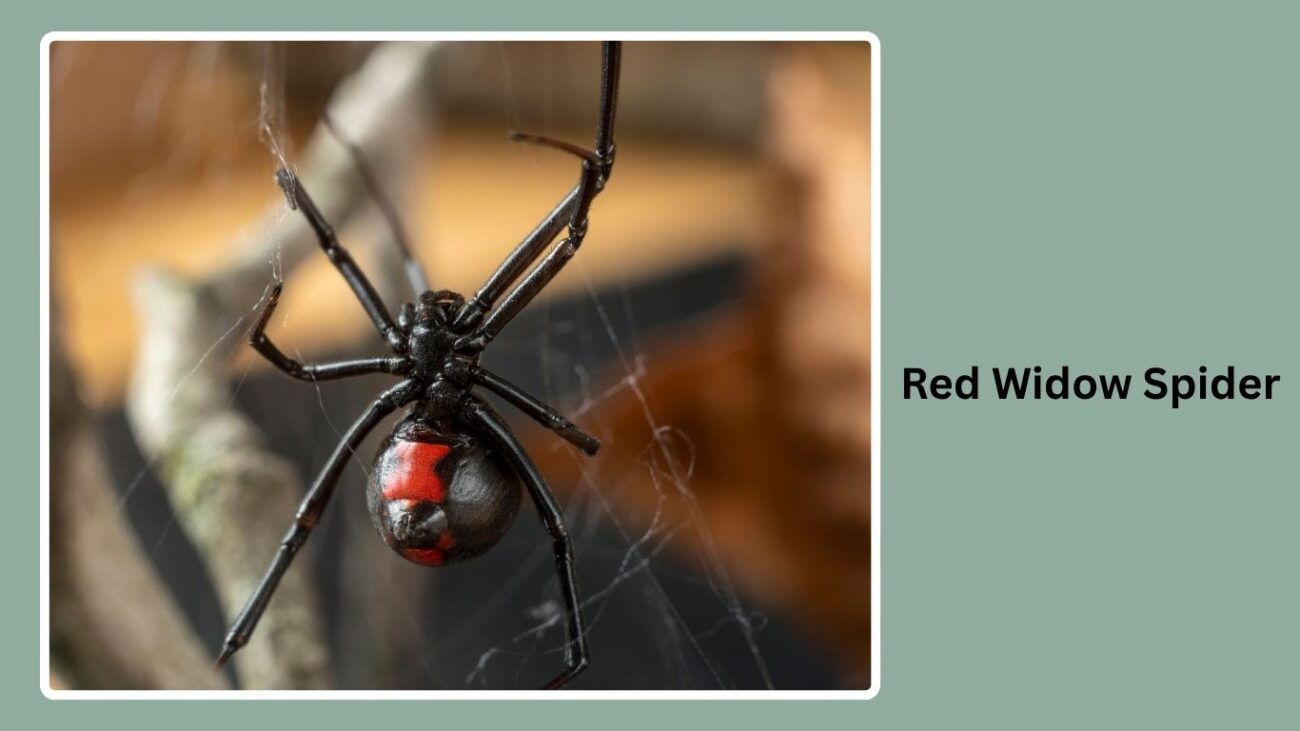
The red widow spider is a rare and brightly colored member of the widow spider family, found primarily in Florida. It is venomous but very reclusive, rarely coming into contact with humans.
Identification
- Size: 7–10 mm (body), leg span up to 25 mm
- Color: Bright red head and thorax, black abdomen with red or orange spots
- Legs: Long, reddish-orange
- Web: Irregular tangled webs
- Markings: Absent or faint hourglass marking underneath
Color Pattern
The red widow’s cephalothorax and legs are vivid red or orange, contrasting sharply with its glossy black abdomen. Some specimens display small red spots or streaks on the abdomen.
Habitat and Behaviors
They inhabit sand pine scrub ecosystems, nesting in palmetto bushes or under debris. Red widows spin irregular webs in natural shelters and prey on flying insects. They are highly localized and not commonly found in urban areas.
Development and Reproduction
Females lay eggs in silk sacs attached to their webs. Spiderlings hatch and disperse by ballooning. They molt several times before reaching maturity. The red widow’s life cycle can take several months depending on conditions.
7. Red Orb-Weaver (Araneus spp.)

Some orb-weaver spiders display vibrant red coloration and are known for their large, circular webs. These spiders are non-aggressive and commonly found in gardens and wooded areas.
Identification
- Size: 6–20 mm depending on species
- Color: Bright red, reddish-brown, or red-orange body
- Shape: Bulbous abdomen
- Web: Large, round, symmetrical webs
- Behavior: Passive, hangs in center of web
Color Pattern
The coloration varies across individuals but often includes bright red or reddish-orange hues on the abdomen and legs. Some may have pale or darker markings depending on species and region.
Habitat and Behaviors
They prefer outdoor environments like gardens, meadows, and forests. These spiders construct large orb-shaped webs to trap flying insects. They are mostly active at night and hide during the day in curled leaves or web retreats.
Development and Reproduction
Females produce egg sacs that are hidden in protected spots. Spiderlings hatch and remain nearby before dispersing. Orb-weavers generally complete their life cycle within one season, especially in temperate climates.
8. Woodlouse Spider (Dysdera crocata)
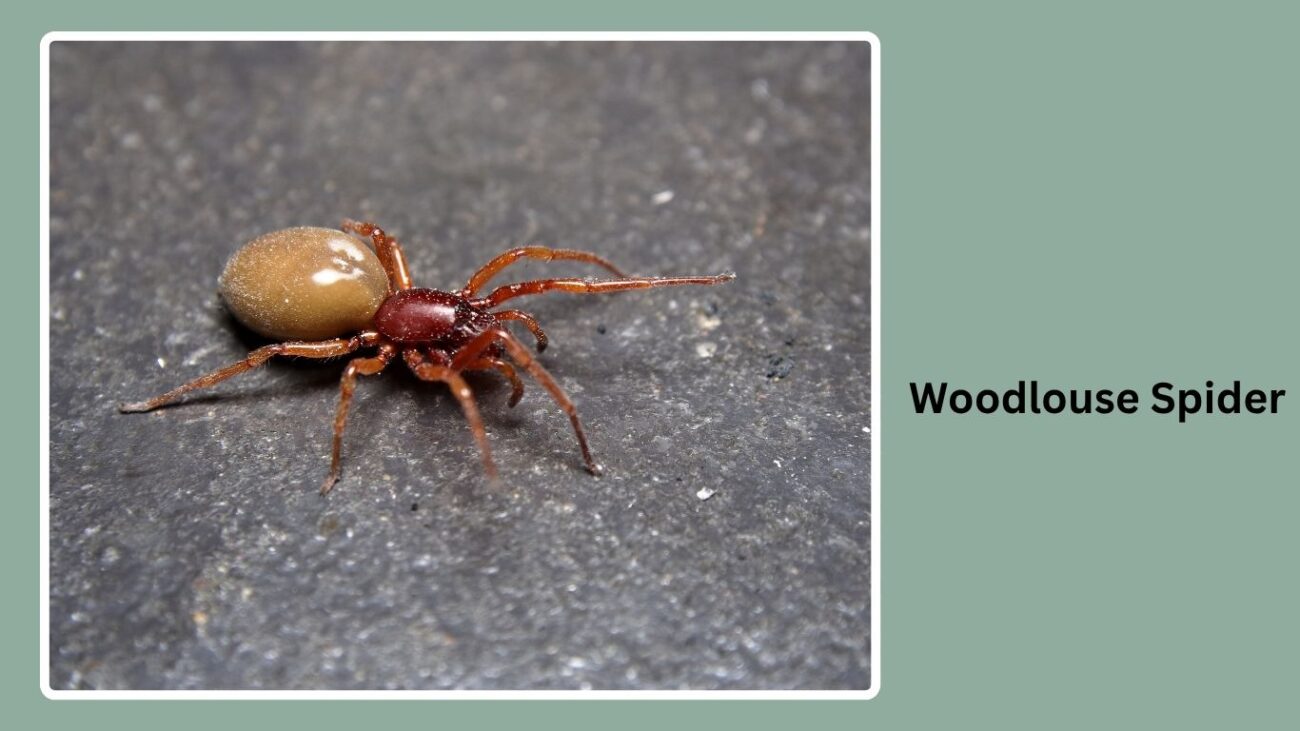
The woodlouse spider is a striking species known for its reddish body and powerful jaws. It is specialized in hunting woodlice and can be found under rocks, logs, or in damp basements.
Identification
- Size: 11–15 mm
- Color: Red to reddish-orange cephalothorax, pale beige abdomen
- Fangs: Large, forward-pointing
- Legs: Reddish and long
- Eyes: Six eyes arranged in a horseshoe shape
Color Pattern
The front part of the body and legs are typically dark red to orange-red, while the abdomen is a soft grayish or tan color, creating a bold contrast. The coloration can vary slightly between individuals.
Habitat and Behaviors
Woodlouse spiders are nocturnal hunters that live in moist, dark environments such as under stones, bark, compost, or debris. They do not use webs to hunt; instead, they actively seek out woodlice, piercing their tough shells with their strong fangs.
Development and Reproduction
Egg sacs are laid in hidden areas and guarded by the female. Spiderlings hatch and stay close to the mother for a short period. The full life cycle can range from several months to over a year, depending on environmental conditions.
9. Red Parasitic Mite (Family: Erythraeidae)

Red parasitic mites are small, vibrant red arachnids commonly seen crawling on plants or other insects. While the larvae are parasitic, the adults are free-living and help control pest populations.
Identification
- Size: 1–2 mm
- Color: Bright red, smooth or slightly hairy body
- Shape: Round to oval
- Legs: Eight legs, often appear proportionally long
- Visibility: Often seen on flowers or host insects
Color Pattern
These mites are uniformly bright red, making them easy to spot on green foliage or insects. Their bold color may serve as a visual warning to predators.
Habitat and Behaviors
They live in grassy areas, flowerbeds, and leaf litter. Larvae attach to insects like grasshoppers or beetles, feeding on their body fluids. Adults are predators of small arthropods and insect eggs, making them beneficial for natural pest control.
Development and Reproduction
Their life cycle includes egg, larva (parasitic stage), nymph, and adult. After detaching from a host, the larva matures into a free-living adult. They reproduce seasonally, with new generations emerging after rains or during warm, humid periods.
10. Red Lynx Spider (Peucetia viridans – Red Variation)
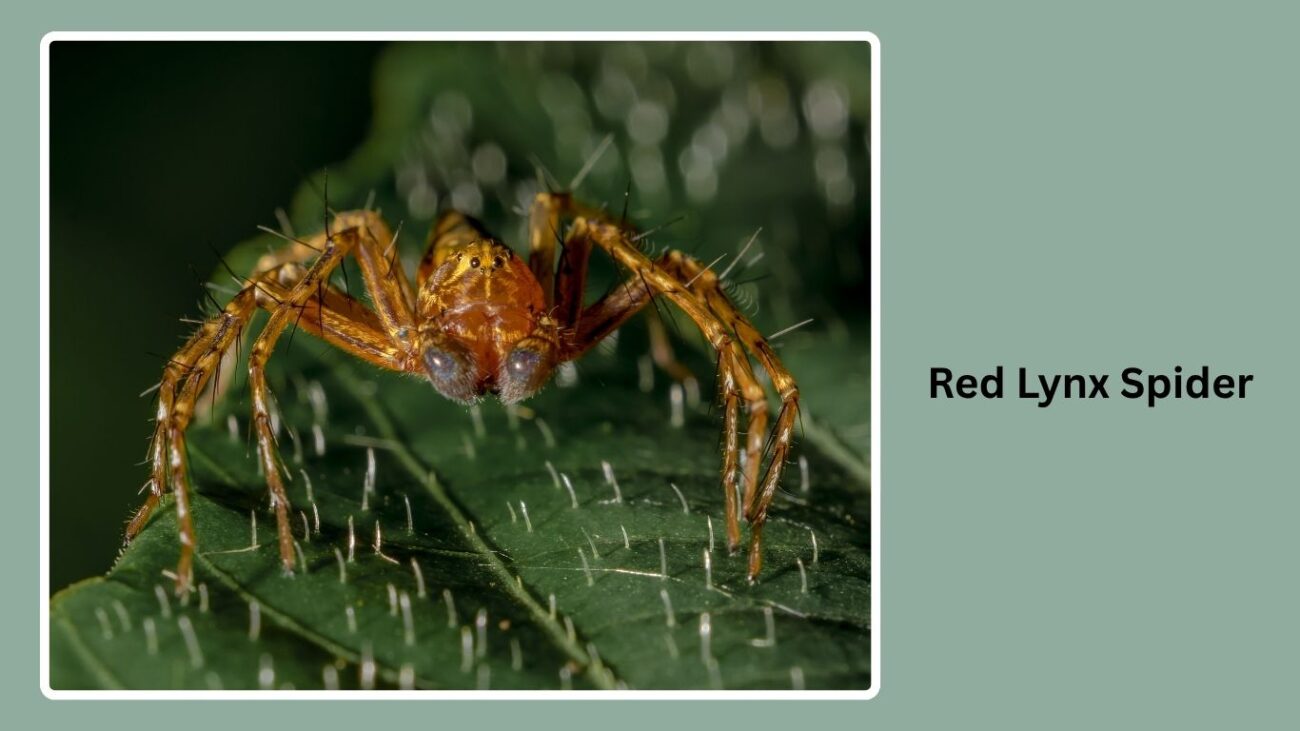
While the typical lynx spider is green, some regional or rare variations show reddish tones, especially in the legs and body. These agile hunters are excellent at ambushing prey on plants.
Identification
- Size: 12–16 mm
- Color: Reddish legs and stripes, pale body with slight greenish tint
- Legs: Long and spiny
- Eyes: Eight eyes in a hexagonal pattern
- Movement: Quick and jumpy
Color Pattern
In red-tinted variations, the legs are marked with red or orange bands, and the body may have red lines or blotches. The overall appearance is striking, with translucent skin showing reddish veins or stripes.
Habitat and Behaviors
They inhabit shrubs, tall grasses, and garden plants. Unlike web-building spiders, lynx spiders actively stalk and leap onto their prey, primarily feeding on insects such as flies and bees. They rely on camouflage and speed rather than traps.
Development and Reproduction
Females produce egg sacs attached to leaves and guard them fiercely. The spiderlings hatch and disperse after their first molt. The full life cycle can span several months, depending on the season and climate.
11. Red Ant Mimic Spider (Castianeira spp.)
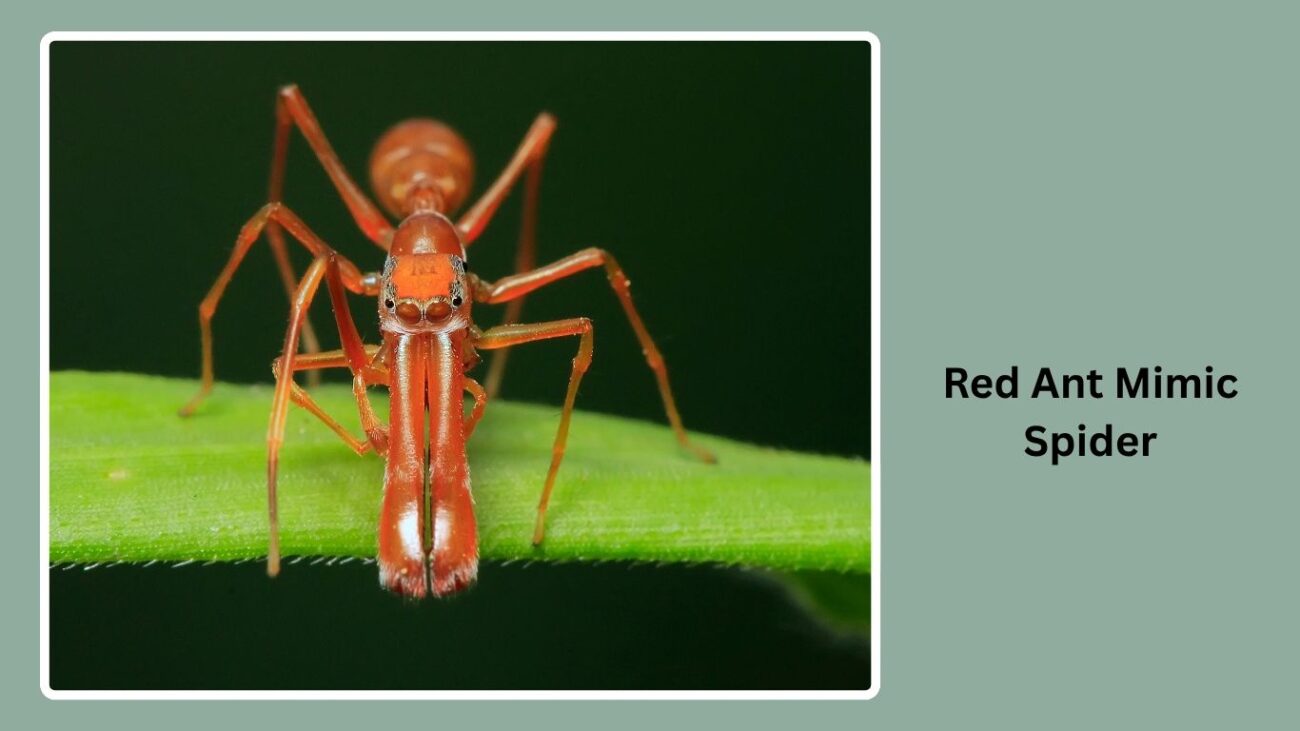
Red ant mimic spiders are clever arachnids that resemble ants in both appearance and behavior. Their reddish coloration helps them blend in with ant colonies to avoid predators and hunt undetected.
Identification
- Size: 6–10 mm
- Color: Reddish-brown body, sometimes with black markings
- Legs: Long and thin, ant-like in movement
- Body Shape: Narrow waist mimicking ant thorax and abdomen
- Behavior: Jerky movements like ants
Color Pattern
They often display reddish hues on the head and thorax with darker abdomens, mimicking the bicolored appearance of many ant species. Some may also show pale banding or spots on the abdomen.
Habitat and Behaviors
Found in leaf litter, under rocks, and near ant trails, these spiders live among ants to gain protection and ambush small insects. Their mimicry not only deters predators but also helps them approach prey unsuspected.
Development and Reproduction
Females lay egg sacs in hidden shelters. Spiderlings hatch and undergo several molts before maturity. Their development time depends on food availability and environmental conditions.
12. Red Harvestman (Opiliones – Red-Bodied Types)
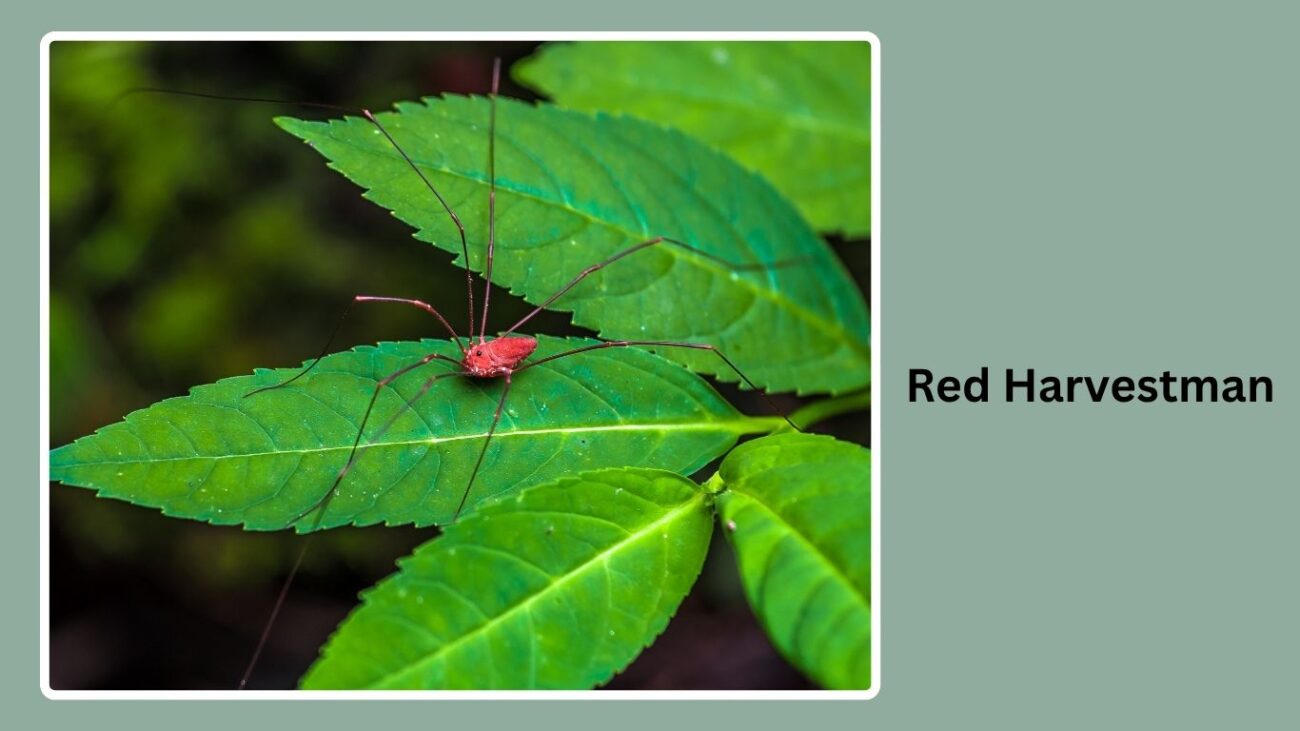
Though not true spiders, some harvestmen species have small red bodies and long, slender legs. These arachnids are harmless to humans and play a role in breaking down decaying matter.
Identification
- Size: 2–10 mm body, legs much longer
- Color: Bright red or reddish-orange body
- Legs: Exceptionally long and thin
- Eyes: Two eyes on a central turret
- Body: Fused, appearing as a single segment
Color Pattern
Certain species display a vivid red or orange-red body, sometimes with darker spots or a slightly mottled appearance. The legs remain dark, creating a strong contrast with the body.
Habitat and Behaviors
They inhabit moist leaf litter, under stones, and in forested areas. Red harvestmen are scavengers, feeding on decomposing plant and animal matter, fungi, and small insects. They do not spin webs or produce venom.
Development and Reproduction
Eggs are laid in damp soil or under debris. Nymphs resemble smaller versions of adults and molt several times before reaching maturity. They are usually most active during humid conditions and nighttime.
FAQs About Small Red Spiders
1. Are all small red spiders dangerous?
No, most small red spiders like clover mites, red velvet mites, and red jumping spiders are harmless to humans. Only a few, like the red widow, have venom that can affect people, but even those rarely bite unless provoked.
2. Why do I see red spiders inside my house?
Red spiders such as clover mites often enter homes during population booms, especially in spring or fall. They usually come in through cracks around windows or doors and are attracted to warmth or light.
3. Do red spider mites bite humans or pets?
No, red spider mites do not bite humans or pets. They are plant pests that feed on the sap of leaves, causing discoloration and damage to plants.
4. How can I get rid of red spiders in my garden?
You can control red spiders like mites with neem oil, insecticidal soap, or by introducing natural predators like ladybugs. Keeping your garden well-watered and reducing dust can also deter them.
5. Can red velvet mites be beneficial?
Yes, red velvet mites are considered beneficial. As adults, they feed on harmful insects and eggs, helping to naturally control garden pests. They pose no threat to people, pets, or plants.



